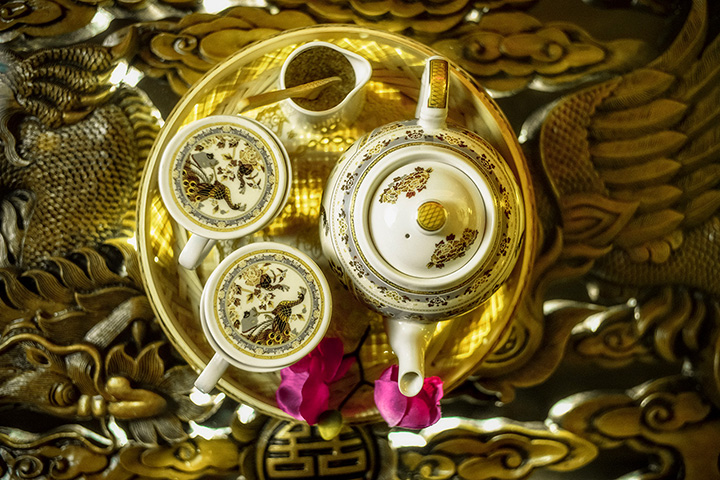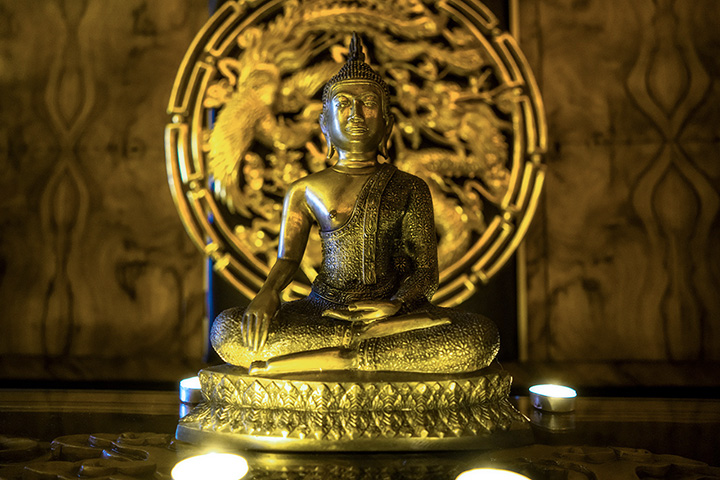Traditional Thai massage
In accordance with the legend, the creator of the Thai massage was Shivago Komarpaj – a personal Buddha’s physician 500 BC. The art of this massage is based on a very wide and rich knowledge of the health and the human body.
Contemporary Thai massage, according to Thais is based on the theory stating that the human body is filled with air particles which are traveling through channels called “sens”. Thai massage through outstretching and compressing techniques focuses on concentrations of “sens”, which are starting at the navel and continue up to your lips. This massage is a combination of acupressure of the more important points on the human body with elements of passive yoga, it is aimed at stimulating the “sens” and directing the air through the body ending the massage on the head. Traditional Thai massage is a sequence of techniques for stretching and reflexology.
It is a deep massage that is bringing together elements of hatha yoga, acupressure, and meditation.
Techniques used during massage, such as acupressure, are eliminating stagnations and are boosting the flow of energy and they are relaxing the muscles. Manipulation techniques will improve the range of joint motion, relax the intervertebral spaces and give a feeling of relaxation. It is a ritual that calms the whole body.

With the classic Thai massage, we will experience the deep relaxation of mind and body and our blood and lymph circulation will be improved. The purpose of the massage is to calm down the whole body by reducing the tension of muscles. The massage will stimulate your body, rejuvenate it. It restores the balance of not only the body but also the spirit..
Traditional Thai massage is a rhythmical pressing on the key points on the body that are responsible for blocking the internal energy. It relaxes soft tissues by putting pressure on them and by stretching positions.
Our experienced masseuses from Thailand when using compression and outstretching techniques use not only their fingers but also elbows, wrists, feet, and knees. Thanks to this type of massage, you will get rid of stress, muscle tension, and pain. This massage also has significant medicinal and rehabilitation properties.

Thai massage is dry and is given without the use of oils. It is also known as “yoga for the lazy” because the position of the body and the stretching are similar to the positions in yoga. We have prepared a special loose clothes made out of cotton for you for the time of the massage. The massage is given on a special mattress that placed on the floor, in a calm atmosphere and intimacy.
Thai massage is given in five positions:
- on back
- on stomach
- on sides
- in sitting position
We start from the feet heading up.
Our masseuses have many years of knowledge, which they acquired in Thailand. Thanks to their experience, they will adjust the intensity of massage and yoga positions to your condition and individual predispositions.
Who is the classic Thai massage recommended for?
Thai massage is recommended for people without vital energy, people who are feeling tired, people living a sedentary lifestyle, people that are not so active, people exposed to stress, people who are working in one position, sportspersons, overweight people, people during rehabilitation and convalescence, people that might potentially deal with bed sores, people after illness or accident and people after removal of cast. We recommend traditional Thai massage in post-traumatic conditions such as bruises, sprains or dislocations, however not faster than after 3 days since the condition occurred. Age does not matter.
How to prepare yourself for Thai massage?
On the day of the massage, it is best not to consume large quantities of food. One hour before the massage eat light meals, drink more water or warm tea. Avoid excess coffee and do not drink alcoholic beverages. Make a few bends that will stretch your muscles. Before the massage remove your jewelry, watch, tie your hair, mute the phone ringtones and your thoughts. In rooms where the massages are given the light is dimmed, you will smell oriental scents and hear Asian music. Every Thai massage beings with washing feet.
In accordance with the tradition after the massage you will be provided with a teacup of Matoom tea.
The effects of Thai massage on our physical and mental health
Thai massage in its classic form will help in the reduction of back pain, joint pain, contractures of muscles and tendons, soft tissue disorders, inflammatory conditions, migraine pain, emotional disorders, treatment of depression and the effects of stress. It boosts the metabolism and blood and lymph circulation, makes the immune system stronger and helps to remove accumulated toxins from our body. Thai massage is helpful when it comes to typical ailments of women such as menopause. It improves the quality of sleep and general well-being. Thai massage relieves discomforts of the postpartum period, firms and slims the body, reducing cellulite. The skin becomes firmer and more luminous. In addition to the regenerative and nurturing effects, traditional Thai massage also has medicinal properties. It not only relaxes the body but also helps in the treatment of many diseases, such as rheumatism, injures by frostbite, paresis, palsies, neuralgia, and faulty posture.

Thai massage contraindications
In case of increased body temperatures (above 38 degrees), inflammatory conditions, feeling weakness, contagious and viral diseases, heart and circulatory system diseases, ulcers, osteoporosis, stroke, sciatica, epilepsy, first days after sprains, bruising or strains of muscles or tendons, fracture, celiac disease, hernia, cancer, pregnancy, menstruation and after drinking alcoholic beverages it is best to reschedule the massage to some other time. If this type of massage it too intense for you or you deal with one of the above conditions we recommend a gentle massage with essential oils.



